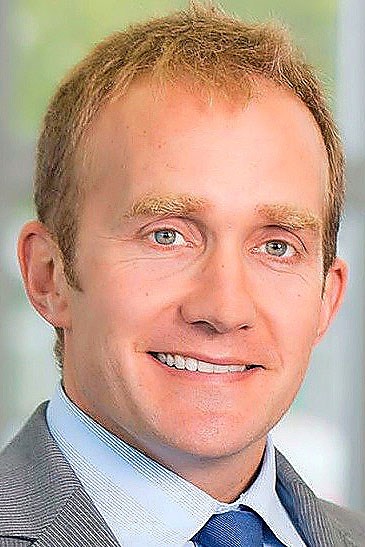Review
Driving with former Top Gear presenter Sue Baker on the launch of Škoda’s new Karoq, we came to the conclusion that if a new entrant to the C-SUV sector isn’t “great”, then consumers will feel it’s simply not worth bothering with.
In the same week the Czech brand put its replacement for the popular Yeti in front of members of the motoring press, the list of new car launches included the Seat Arona, Hyundai Kona and the Karoq’s Volkswagen Group stablemate, the T-Roc.
Competition in the sector is hot and getting hotter by the day.
Despite a cooling market across Europe, SUV sales are on track to grow by 200,000 this year to 1.9 million and top 2.2 million by 2020, IHS Automotive has predicted.
The Karoq is not the Talbot Rancho-style crossover of its Yeti predecessor. Duncan Movassaghi, Škoda UK brand director, acknowledged: “It’s closer to what we have come to expect of an SUV.”
Sitting on Volkswagen Group’s MQB platform, it shares the same design language of the larger Kodiaq.
Škoda’s SUVs will be hard to separate from a distance, although the Karoq is 315mm shorter (4,382mm), 41mm narrower (1,841mm), 50mm lower (1,605mm) and goes without the option of seven seats.
That’s a useful 160mm longer and 48mm wider than the outgoing Yeti, though, and families will benefit from flexibility too.
A 521-litre boot can be increased to 1,630 litres with the rear seats folded, and Škoda’s VarioFlex system – standard on SE-L and Edition specifications – delivers three individual rear seats, which can be individually adjusted or completely removed to liberate a maximum capacity of 1,810 litres.
Karoq prices start at £20,875 for the SE trim model equipped with the Volkswagen Group’s 115PS one-litre turbocharged three-cylinder petrol engine, with the SE-L trim Movassaghi described as the range’s “sweet spot” sitting below the range-topping Edition trim.
Prices top out with the £31,690 Edition 150PS two-litre TDI DSG 4x4.
Škoda’s representative PCP offer at launch is a 42 month/35,000-mile contract at 6.1% APR, which sees the Karoq SE-L TSI 115PS offered for £285 a month after a £1,500 manufacturer deposit contribution and £2,930.25 customer deposit.
Škoda offers its two-litre TDI engine with four-wheel-drive as standard – it is unavailable with the other engines – but all four (two petrol, two diesel) engine options are available with the option of a seven-speed DSG automatic transmission.
The 115PS 1.6-litre TDI Karoq is the most frugal in the line-up, delivering 61.4mpg fuel economy on the combined cycle.
Unusually, the most frugal option doesn’t deliver the lowest CO2 emissions, with the 1.6-litre’s 120g/km score just pipped by the one-litre TSI unit’s 119g/km, despite the latter offering worse (53.3mpg) fuel economy.
The quickest variant is the 150PS 1.5-litre TSI, which should reach 60mph in 8.1 seconds, on the way to a 126mph top speed.
On the sun-soaked, but severely pock-marked, tarmac of Škoda’s chosen launch location, Sicily, we got the chance to drive the Karoq with the 115PS TDI and 115PS one-litre TSI engines.
While the bucking road surface did its best to unsettle the Karoq, it felt composed and rode comfortably, not feeling over-firm as some compact SUVs can in their pursuit of car-like dynamics.
The small petrol engine was the surprise package, doing a seamless job of propelling the fairly large Karoq. Škoda claims it will accelerate to 60mph in 10.3 seconds and has a top speed of 116mph.
Volkswagen has recently announced plans to curb competition from Škoda, and the Karoq’s cabin shares enough of the German brand’s recognised quality to understand why.
Impressive refinement, an abundance of soft-touch plastics and a neatly integrated touchscreen infotainment system – with motion-sensing functionality on the range-topping Columbus system – are all class-leading. The Audi Virtual Cockpit-like digital instrument panel is also an option.
The level of on-board equipment and the technology’s intuitive functionality should prove a strong selling point.
The standard equipment includes 17-inch alloys, LED daytime running lights, rear parking sensors, dual-zone climate control and cruise control, along with an eight-inch touchscreen Bolero infotainment system featuring DAB radio, Bluetooth connectivity and the ability to read out SMS messages.
Standard safety equipment – which won a five-star Euro NCAP rating – includes front, head, knee, curtain and front-side airbags, and a radar scanning system that will identify pedestrians and other obstacles and deploy automatic braking if it anticipates a collision.
SE-L specification adds: keyless entry and engine starting; an Amundsen satnav system with integrated Wi-Fi and a reversing camera; Alcantara upholstery; and drive mode select, which allows drivers to adjust steering and throttle through Normal, Eco, Sport and Individual settings.
Edition trim features 19-inch alloys, panoramic sunroof, leather upholstery, a nine-inch Columbus touchscreen satnav; an infotainment system. It also includes a host of semi-autonomous driver assistance functions, including: lane assist; blind spot detection; rear traffic alert; and traffic sign recognition.
While some fans of the Yeti will mourn its loss, it feels like the Karoq may give Škoda’s dealer network a winner in a hotly contested segment.
Q&A: Duncan Movassaghi, Škoda UK brand director
 The Yeti was something of a surprise success for Škoda when it was launched in 2009, but the Karoq seems to fit the bill of what we expect of an SUV right now. What are your expectations this time around?
The Yeti was something of a surprise success for Škoda when it was launched in 2009, but the Karoq seems to fit the bill of what we expect of an SUV right now. What are your expectations this time around?
Yeti was a surprise success. In terms of Karoq, I think 15,000 is a good number that we can sell sensibly, profitably and in the right channels.
We’ll work across all fleet channels, but it really depends what allocation we get. At 15,000, we’ll have an offer in fleet, but we’ll have a good proportion of retail.
We want to be in Motability, it’s a good channel, but it’s also an expensive channel and we need to manage all those channels responsibly and get that balance right.
Yeti has been a great success, particularly in Motability. We could have pushed it a lot harder, but we chose not to.
Consumers are shifting away from diesel in the smaller car segments in particular. How have you accommodated that in your thinking for the Karoq?
We have seen a swing over the past 12 months towards petrol and the good news is that we have been working very closely with the factory to get our production re-balanced. I see the 1.5 TSI as the go-to engine in the Karoq.
There’s still clearly a demand for diesel in our larger cars, like our Superb and Kodiaq, but in Karoq I think we’ll see a much larger mix in petrol and the 1.5 will be the big seller.
Industry-wide, I think there’s been a 10% swing from diesel to petrol and we’re not a million miles away from that.
SE-L will be the sweet spot in terms of specification. In Kodiaq, we’ve sold 80% SE-L plus. I don’t think we’ll see such a strong SE-L mix in Karoq, but it will remain the sweet spot in the range.
Retailers will have to wait until January to get the Karoq in their showrooms, but what contact have retailers had with the car so far?
A landmark or new car like this has a very regimented launch plan. At this stage, the dealers have been invited to an event, but have yet to see the car physically.
The week after the press launch, they will be able to drive the car for the first time and that’s hugely important for us ahead of the car arriving in the UK with dealers and fleet operators.
It will be going into showrooms in early January.
We don’t come into the year with a full order bank, but as close to that as you might expect.
Author:
Tom Sharpe
Former news and features editor (left May 2023)
Factsheet
Price: £20,875-£31,690
Engines: 115PS 1-LITRE AND 150ps 1.5-LITRE TSI PETROL; 115PS 1.6-LITRE TDI; 150PS AND 190PS, 2-LITRE TDI
Performance: 0-62MPH 8.4-10.7 SECONDS; TOP SPEED 116-131MPH
Gearboxes: SIX-SPEED MANUAL OR 7SP DSG AUTOMATIC
Efficiency: 44.3MPG-53.4MPG; 115-138g/km CO2














